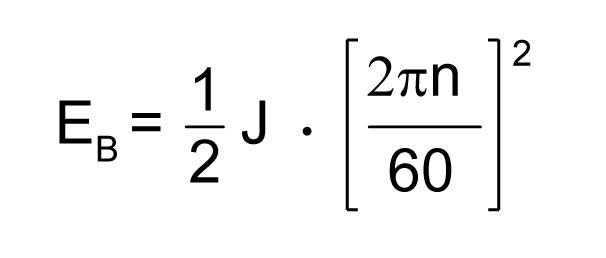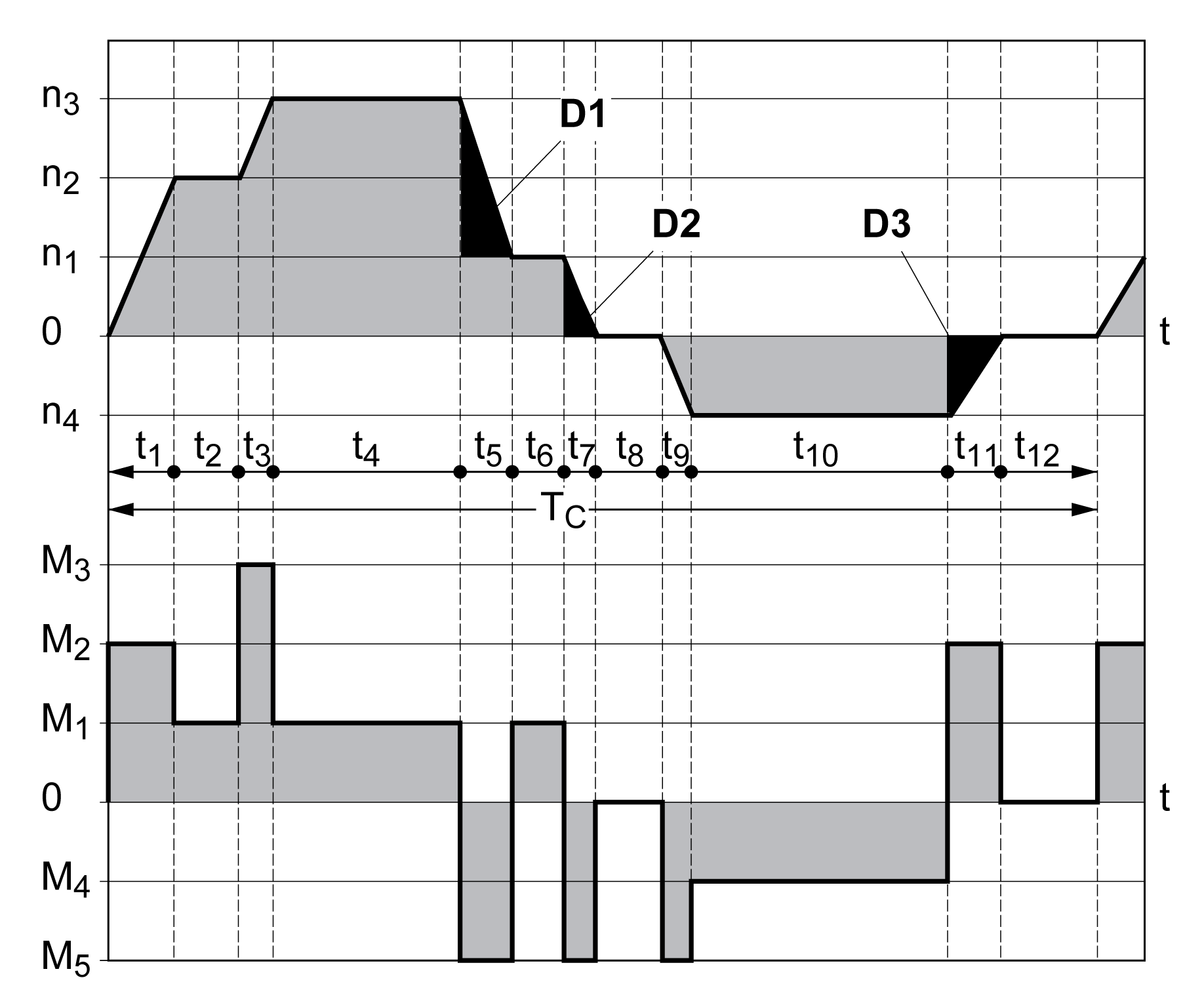To rate the braking resistor, calculate the proportion contributing to absorbing braking energy.
An external braking resistor is required if the kinetic energy that must be absorbed exceeds the possible total internal energy absorption.
Braking energy is absorbed internally by:
oDC bus capacitor Evar
oInternal braking resistor EI
oElectrical losses of the drive Eel
oMechanical losses of the drive Emech
Values for the energy absorption Evar can be found in chapter Braking Resistor.
Two characteristic values determine the energy absorption of the internal braking resistor.
oThe continuous power PPR is the amount of energy that can be continuously absorbed without overloading the braking resistor.
oThe maximum energy ECR limits the maximum short-term power that can be absorbed.
If the continuous power was exceeded for a specific time, the braking resistor must remain without load for a corresponding period.
The characteristic values PPR and ECR of the internal braking resistor can be found in chapter Braking Resistor.
The electrical losses Eel of the drive system can be estimated on the basis of the peak power of the drive. The maximum power dissipation is approximately 10% of the peak power at a typical efficiency of 90%. If the current during deceleration is lower, the power dissipation is reduced accordingly.
The mechanical losses result from friction during operation of the system. Mechanical losses are negligible if the time required by the system to coast to a stop without a driving force is considerably longer than the time required to decelerate the system. The mechanical losses can be calculated from the load torque and the velocity from which the motor is to stop.
Deceleration of a rotary motor with the following data:
oInitial speed of rotation: n = 4000 RPM
oRotor inertia: JR = 4 kgcm2
oLoad inertia: JL = 6 kgcm2
oDrive: Evar = 23 Ws, ECR = 80 Ws, PPR = 10 W
Calculation of the energy to be absorbed:

to EB = 88 Ws. Electrical and mechanical losses are ignored.
In this example, the DC bus capacitors absorb Evar = 23 Ws (the value depends on the device type).
The internal braking resistor must absorb the remaining 65 Ws. It can absorb a pulse of ECR = 80 Ws. If the load is decelerated once, the internal braking resistor is sufficient.
If the deceleration is repeated cyclically, the continuous power must be taken into account. If the cycle time is longer than the ratio of the energy to be absorbed EB and the continuous power PPR, the internal braking resistor is sufficient. If the system decelerates more frequently, the internal braking resistor is not sufficient.
In this example, the ratio of EB/PPR is 8.8 s. An external braking resistor is required if the cycle time is shorter.
Rating the External Braking Resistor
Characteristic curves for rating the braking resistor

These two characteristics are also used for the rating the motor. The segments of the characteristic curves to be considered are designated by Di (D1 ... D3).
The total inertia Jt must be known for the calculation of the energy at constant deceleration..
Jt = Jm + Jc
Jm: Motor inertia (with holding brake)
Jc: Load inertia
The energy for each deceleration segment is calculated as follows:

Calculation for the segments (D1) … (D3):



Units: Ei in Ws (wattseconds), Jt in kgm2, ω in rad and ni in RPM.
See the technical data for the energy absorption Evar of the devices (without consideration of a braking resistor).
In the next calculation steps, only consider those segments Di, whose energy Ei exceeds the energy absorption of the device. These excess energies EDi must be diverted by means of the braking resistor.
EDi is calculated using the following formula:
EDi = Ei - Evar (in Ws)
The continuous power Pc is calculated for each machine cycle:

Units: Pc in W, EDi in Ws and cycle time T in s
The selection is made in two steps:
oIf the following conditions are met, the internal braking resistor is sufficient.
oThe maximum energy during deceleration must be less than the peak energy that the braking resistor can absorb: (EDi)<(ECr).
oThe continuous power of the internal braking resistor must not be exceeded: (PC)<(PPr).
oIf the conditions are not met, you must use an external braking resistor that meets the conditions.
For order data for the external braking resistors, see chapter Accessories and Spare Parts.